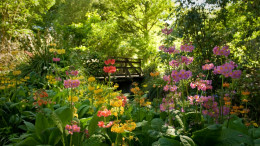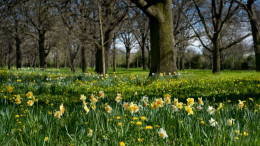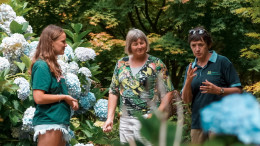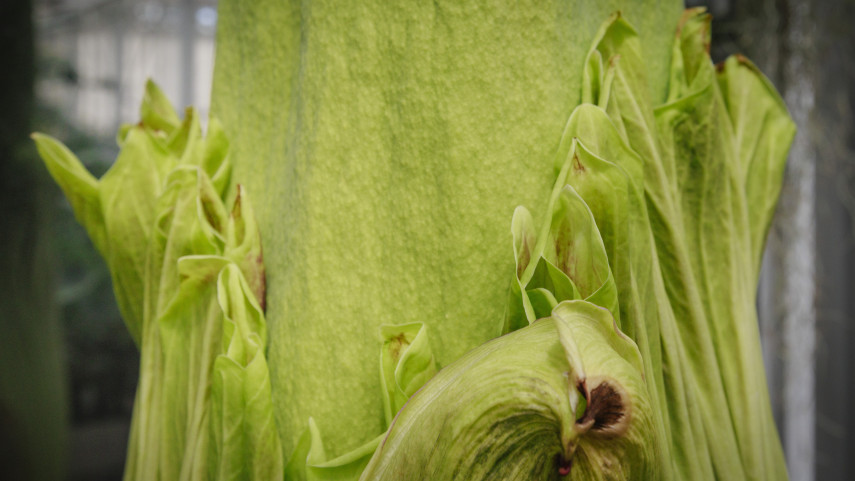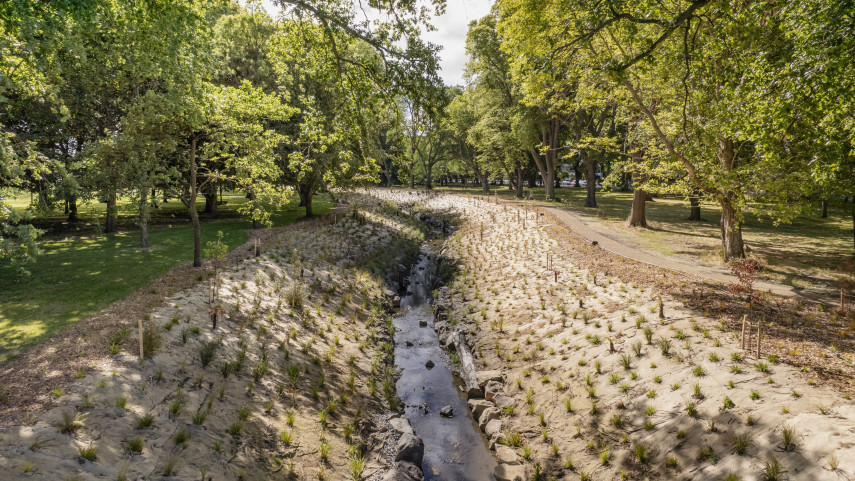Hagley Park has been at the heart of Christchurch since the 1850s when it was set aside for the enjoyment of Christchurch residents. Today, it is the most significant central city park, offering a diverse range of entertainment and recreational facilities close to the city centre.
Hagley Park is renowned for its extensive area of 165 hectares (407 acres), its wide-open spaces and mature woodlands. It comprises North and South Hagley Park which are separated by Riccarton Avenue and bordered by Deans, Hagley, Rolleston and Harper Avenues.
A visit to Hagley Park gives an appreciation for the very beginnings of Christchurch City as we know it today.
Access
View a map of Hagley Park. [PDF, 678 KB]
There are two paid car parks in North Hagley Park - the Riccarton Ave-Botanic and Armagh Street-Botanic car parks, and two paid car parks in South Hagley Park - the Cricket Oval and the Horticultural Centre car parks. There is also additional free parking around the perimeter of the park.
The four paid car parks are metered and monitored. You are welcome to park for up to 180 minutes. Fees are $2 for the first hour, and $1.30 for each subsequent hour, up to a maximum of $4.60 for three hours. Parking can be paid for by credit or debit card, or via the PayMyPark app(external link).
Although Hagley Park is open all hours, car parking at both Riccarton Ave and Armagh St is only between:
- 7am and 9pm November to February
- 7am and 8.30pm March
- 7am and 6.30pm April to September
- 7am and 8.30pm October
Contact the Christchurch City Council on 0800 800 169 or 03 941 8999 to release locked in vehicles at the owner's expense.
Metroinfo has up to date bus information.(external link)
Smoking and vaping
People are asked to refrain from smoking in Council-owned playgrounds and parks (including sports parks) in line with the Council's Smokefree and Vapefree Public Places Policy.
Dogs
Dogs in Hagley Park are allowed to be off-leash as long as they are under effective control.
On pathways, dogs must be on a lead.
Dogs are prohibited in the Botanic Gardens by law.
Bicycles
Bikes in Hagley Park must share pathways with walkers.
Bikes are prohibited in the Botanic Gardens, please dismount and continue on foot.
Bike stands are available at all entrances to the Botanic Gardens.
Facilities
Picnic facilities with free barbeques, drinking water and toilets are located in both North and South Hagley Park.
Sport and fitness
Hagley Park has facilities for:
- golf(external link)
- netball(external link)
- petanque(external link)
- croquet(external link)
- model yachts(external link)
- tennis(external link)
There's sports grounds for both school, club and casual competition. Check where the sports fields are located.
All club competition inquiries can be made via Sport New Zealand.(external link) All fitness organisations inquiries can be made via the Registered Exercise Professionals.(external link)
There is also a fitness circuit in Hagley Park bordering the perimeter pathway of North Hagley Park. There are 17 exercise stations as part of this circuit.
Events
Ever since the 1906-07 New Zealand International Exhibition, North Hagley Park has been a popular venue for outdoor events.
 Heritage
Heritage
In December 1850, the first ships carrying British settlers arrived in Canterbury. Many of the colonists built huts along the Avon River in what is now North Hagley Park. This cluster of huts became known as Settlers Corner.
The settlers used a natural spring close to their homes, known today as Pilgrim's Well. A stone memorial encloses this spring on the north bank of the Avon. The memorial commemorates the 80th anniversary of the arrival of the first ships.
The area which is now Hagley Park was scrubby grassland and shingle, criss-crossed by creeks feeding the swampy Avon river. The colonists intended their new city to have green spaces. It wasn't long before they were clearing and planting, developing what was to be "reserved forever as a public park, and open for the recreation and enjoyment of the public."
The settlers named Hagley Park after the English country seat of Lord Lyttelton, chair of the Canterbury Association which established the Church of England settlement of Christchurch.
In the 1860s a section of Hagley Park was chosen as the site for the Christchurch Botanic Gardens.
Early Canterbury settlers found the expanse that is now Hagley Park "unprepossessing in appearance". They soon began planting the many trees that have grown to make the park the green heart of Christchurch city. There are now more than 3000 trees in Hagley Park.
The first formally recorded planting in Hagley Park was an avenue of Oriental plane trees, established in North Hagley in 1870.
Lakes Victoria and Albert
In 1897 the people of Christchurch marked the Queen of England's 60th anniversary by excavating a lake from the naturally occurring swamp in North Hagley park and naming it in the Queen's honour. Lake Victoria was stocked with perch and became a favourite spot for sailing model yachts.
The lake was a centrepiece of the 1906-07 New Zealand International Exhibition. The Government of the day chose Christchurch to host the massive trade and tourism event, which covered more than a quarter of Hagley Park.
More than one million visitors came to the exhibition to see the many industrial and commercial wares on display, and to enjoy recreation attractions like the overhead gondola and the giant boat ramp into Lake Victoria.
The description of Christchurch as the 'Garden City' started at this time.
In 1916, an area close to Lake Victoria was excavated for soil to improve the border on Rolleston Avenue. The excavated area became Albert Lake, named in memory of Victoria's husband.
More information
For further information about the history of Hagley Park, look at the Conservation and Management Plans.
Addington Brook is a spring-fed urban waterway that passes through industrial-use land before flowing through Hagley Park to join the Ōtākaro-Avon River near the Botanic Gardens.
Addington Brook was selected as a priority catchment to restore by ECan’s Christchurch West Melton Zone Committee in 2014 due to consistently poor water quality and catchment health.
Cycling
Whether you're looking to link up with the various city cycle networks or take a family ride on the easy terrain, Hagley Park has you covered.
Walking
With the perimeter pathway of North Hagley Park measuring 4.5 km, and South Hagley, 3.7 km, there is plenty of space along the tree lined avenues for walking and cycling.
Check out walks on offer in Hagley Park and in the nearby Botanic Gardens and Millbrook Reserve.
There are also free guided tours at the Botanic Gardens, October to April at 1.30pm daily.


